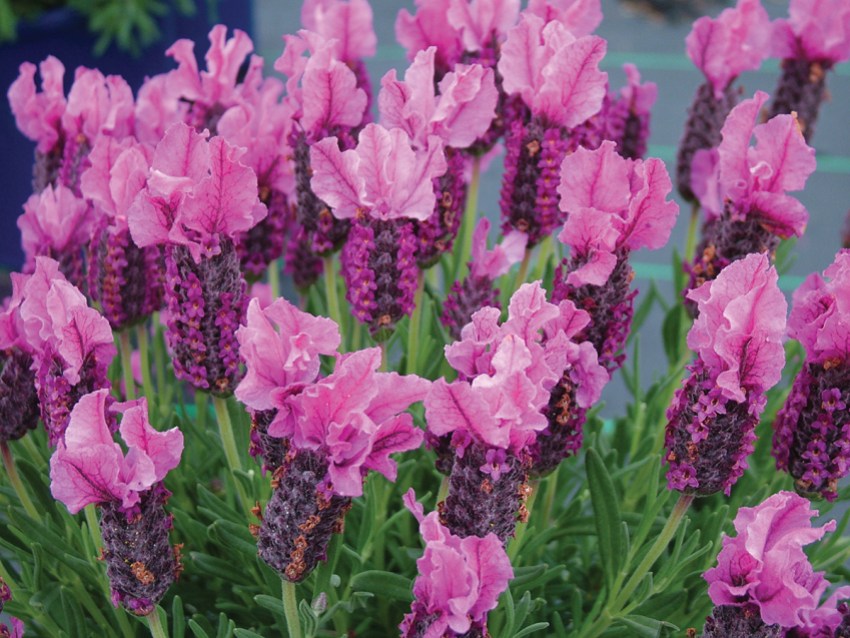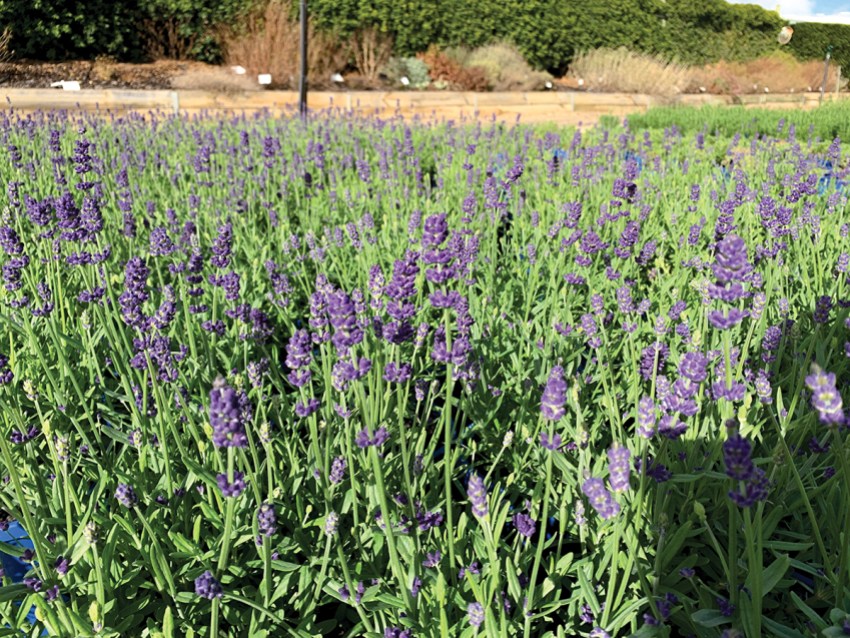Giving your garden a Mediterranean feel with one of our best known and most-loved plants has never been easier … or prettier.
Purple reign
For many of us, lavender invokes memories: its scent can be a reminder of those sachets or drawer-liners that used to be there on a visit to your grandmother’s house, or when your mother was treating a cut or sunburn with lavender oil.
If you have travelled overseas, you may recall the lavender fields and farms of Provence, although you can get that same experience much closer to home in South Australia at either the Lyndoch Lavender Farm or on Kangaroo Island at the Emu Bay Lavender Farm. Both are well worth a visit.
Originating in the Middle East and the Mediterranean regions, lavender – a member of the mint family – has been grown and used for centuries across many cultures.

Its name derived from the Latin “lavare” meaning “to wash” and the Romans commonly used lavender to scent their baths and clothes, and it was often used for its medicinal properties as well as in food preparation.
Lavender is widely grown across the world for these same reasons and simply for its beautiful flowers and perfume in the garden. It is also a fantastic plant to use to attract bees and other pollinators into your garden. A plant or two near the vegetable patch can certainly help to improve your vegetable crops.
Lavender is an evergreen, perennial shrub that can grow up to one metre in height, flowering from late winter right through until autumn. Preferring to grow in full-sun, lavender will tolerate part-shade, and while it will love a hot, dry summer, it is not so tolerant of wet soils.

If your soil is “heavy” and holds too much moisture, consider growing lavender in pots or on raised mounds to improve drainage. A pH of six to eight is best, so you may need a side dressing of lime at planting time and periodically check to maintain this level.
Lavender plants are suitable for growing in coastal regions and work well in both Mediterranean-style and cottage gardens.
Often grown as a low hedge or border, lavender requires regular pruning to keep its shape and health. Lightly trim after the first flush of flowers to encourage repeat flowering and then remove about one third of the growth after summer flowering to support the health of the plant and encourage new growth. Try not to cut right back into bare wood as the plant may not regrow, if the plant needs this much work it is often better to simply replace it.

Feeding in spring is usually all the plants need, and pests are not often a problem due to the oils in the leaves and stems. Mould and rot are the most common diseases, both stemming from too much water either in the soil or held on the foliage.
There are many different varieties of lavender but some of the ones commonly grown here in South Australia are as follows, most of which are available in garden centres across the state, with new season stock typically arriving from April and May.
English lavender
English lavender (lavandula angustifolia), often referred to as “true lavender”, is not in fact English but native to the Mediterranean. Its flowers can colour as blue-purple, violet-blue or white-pink depending on the cultivar with its main flowering early to mid-summer. Very aromatic, this is the main variety from which the flowers and stems are used for oil production, culinary use and in the health industry. A small shrub to about one metre, this form is wonderful for borders, hedging, rock gardens or mass planting. Prune after main flowering. Well-known varieties include “Hidcote”, “Munstead”, “Aromatica” and “Egerton Blue”, though not widely available, is particularly good as a culinary variety.

French lavender
French lavender (lavandula dentata) is a small shrub that grows to around 60 centimetres, with grey/green leaves that have distinctive toothed edges and are woolly in texture. Narrow purple flowers topped with violet bracts appear in mid- to late-spring and are long-lasting. Lavandula dentata “Super French” is another form, bred in Australia, which grows one metre in height, with fragrant mauve-blue flowers.
Italian lavender
Italian Lavender (lavandula stoechas x viridis “avonview”) is a hardy plant growing to one metre, vigorous, but staying quite compact. Deep purple flower spikes over a lengthy period make this a worthy addition to any garden. Please note: this variety is not to be confused with Spanish lavender (lavandula stoechas) which, not yet a declared weed in South Australia, is regarded as a significant pest plant.

Australian lavender
There have been numerous lavenders bred in Australia specifically for Australian conditions. Forms of Australian lavender (lavandula pedunculata) sold as the “Elite” range in South Australia, are widely available with pink, purple or white-winged flowers. Hardy, upright plants growing up to one metre, these make a wonderful hedge and are heat and humidity tolerant.
Others
Lavish™ Lavender (lavandula hybrid) is a range of double lavenders with wings all the way down the head. Marketed as the world’s first double lavender there are four colours on compact 50 centimetre plants.
Melbourne-based company, Lavinnova, has bred numerous beautiful varieties including the “Pink Princess”, which grows to approximately 60 centimetres, with pink flowers, while the “Silver Princess” grows to the same height but has dusky pink flowers on silver foliage. They also have a range of “ruffled” lavenders, in six colours across the collection so far, which features large ruffled-like wings on a 70 centimetre plant.
This article first appeared in the Winter 2023 issue of SALIFE Gardens & Outdoor Living magazine.



